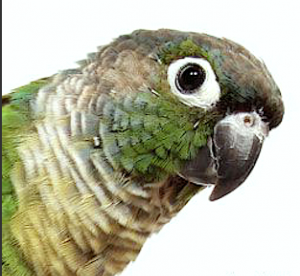You are here: Home1 / Lawsuit Reveals How Paid Expert Helped 3M “Command the Science”

Original ↓ ↓ ↓
Lawsuit Reveals How Paid Expert Helped 3M
“Command the Science” on Dangerous Chemicals

24 February 2018
On Tuesday, 3M settled a suit filed by the state of Minnesota for $850 million, averting a much-awaited trial over the company’s responsibility for massive amounts of waste containing perfluorinated chemicals, which it had dumped in the state for more than 40 years.
The suit charged that the Minnesota-based company, which made the perfluorinated chemicals for use in Scotchgard, firefighting foam, and other products, “acted with a deliberate disregard for the high risk of injury to the citizens and wildlife of Minnesota.”
The complaint details how chemicals from the plant seeped into Minnesota’s drinking water and accuses the company of covering up the knowledge that its perfluorinated products, including PFOA, PFOS, PFBA, and FPBS, accumulate in people’s bodies and present a health hazard. According to expert testimony filed in the case, tens of thousands of Minnesota residents were likely exposed to the chemicals. Perfluorinated chemicals, or PFCs, belong to a broad class of compounds known as per- and polyfluoroalkyl substances, or PFAS, and are associated with immune, hormonal, and reproductive problems, including miscarriage and thyroid dysfunction.
With the settlement, 3M avoided any admission of liability. “We do not believe there is a PFC-related public health issue,” said John Banovetz, senior vice president, 3M Research & Development, and chief technology officer, in the company’s statement. The statement also said that the “settlement will ensure that the money 3M contributes to the State will go directly to activities and projects related to the reduction of PFCs in the environment and also to the enhancement of groundwater sustainability in the Twin Cities East Metro area.” The statement also described the settlement as “consistent with 3M’s long history of environmental stewardship.”
Critically, the settlement also allows 3M to largely escape a public airing of how it shielded itself from responsibility for PFOA contamination even though DuPont, which bought PFOA from 3M for years, was held liable for causing kidney cancer and other diseases. That parallel litigation, which charged DuPont with polluting drinking water in West Virginia and Ohio with the very same chemical, resulted in a $671 million settlement last year. Documents obtained through discovery provided a close look at DuPont’s efforts to cover up its role in the contamination.
While some of 3M’s history will remain secret as a result of the settlement deal, documents already made public in the Minnesota case point to one critical tool the Minnesota-based company used to defend itself — a scientist named John Giesy, who helped 3M spin the science on PFCs chemicals in the company’s favor even as he presented himself as an independent scientist.
Giesy and 3M did not respond to requests for comment.
Giesy has worked as a professor at the University of Saskatchewan, Michigan State, and at least 11 other universities, and received grants from 3M for “selective funding of outside research.” That funding was a key part of 3M’s strategy around PFCs, which according to one internal document was guided by the dictum “command the science.” The studies the company produced through this effort, as slides 3M prepared about its research program make clear, were intended partly as “defensive barriers to litigation.”
As an expert on perfluorinated chemicals, Giesy was in a position to review “about half of the papers published in the area” of PFC ecotoxicology, according to the Minnesota complaint. He also served as an editor for several journals, included a special issue of Environmental Toxicology and Risk Assessment, and an issue of the journal “Chemosphere,” on the risks of persistent organic pollutants.
Giesy received more than $2 million in grants from 3M, according to his 262-page curriculum vitae, and has a net worth of about $20 million, according to the court filing. Although Giesy billed 3M for the time he spent reviewing articles (his rate for at least some of the work he did for the company appears to have been $275 per hour), he did not invoice the company for curating studies to limit its exposure. Instead, as he explained in a 2008 email to William Reagen, a lab manager at 3M, “In time sheets, I always listed these reviews as literature searches so that there was no paper trail to 3M.”
Giesy also appears to have been involved in a 3M-led effort to monitor research on PFCs in Asia. According to another document made public by Minnesota Attorney General Swanson:
John Giesy will attend meetings and develop joint projects with Chinese colleagues from whom he can obtain information and over whom he can exert some influence to maintain quality of the results. To achieve these goals, JPG will need to “buy favors” in the form of supplying standards and reference materials and validation of methods by analyzing split samples at the 3M laboratories or contract laboratories.
Giesy’s curriculum vitae lists him as holding or having held faculty positions at Nanjing University, the University of Hong Kong, the City University of Hong Kong, and Xiamen University.
While science is supposed to present findings in an unbiased way, Giesy “bragged about rejecting at least one article that included negative information on the harmful effects of PFCs on humans,” according to the Minnesota court filing. In his email, the professor also offered to pass the articles for review directly onto 3M staff so they could review them themselves.
This would have been in keeping with the strategy Giesy outlined in another email to Reagen to “keep ‘bad’ papers out of the literature, otherwise in litigation situations they can be a large obstacle to refute.”
After the $850 million settlement, less than a fifth of the $5 billion the state was originally seeking in damages, the company will no longer face those large obstacles or litigation situations in Minnesota. At least 10 other cases are pending against the company in other states.
Giesy, too, will likely avoid much of the scrutiny he would have experienced had lawyers chronicled his efforts to exonerate 3M’s toxic chemicals in a courtroom filled with reporters.
This isn’t the first time the company has dodged the litigation spotlight. Robert Bilott, the attorney who won the landmark class-action suit against DuPont in West Virginia, also sued 3M in Minnesota in 2004. State law did not permit medical monitoring claims to be pursued in class-wide suits in Minnesota. So while the West Virginia suit yielded a $671 million settlement and led to the medical monitoring of tens of thousands of exposed people, in Minnesota it was extremely limited. The judge in the case ruled that plaintiffs’ lawyers could not even mention the possibility that the chemicals posed any harm and, at the request of 3M, sealed the case documents, keeping the details of the company’s actions around perfluorinated chemicals largely under wraps.
The decision to settle the latest case in Minnesota means most of the details about 3M’s PFC contamination will remain secret. “They were just about to start a very public trial. All of this stuff was finally going to get out in the public domain with documents flashing on a screen,” Bilott said. “It’s probably well worth the cost.”
Reproduced by –



Scroll to top

